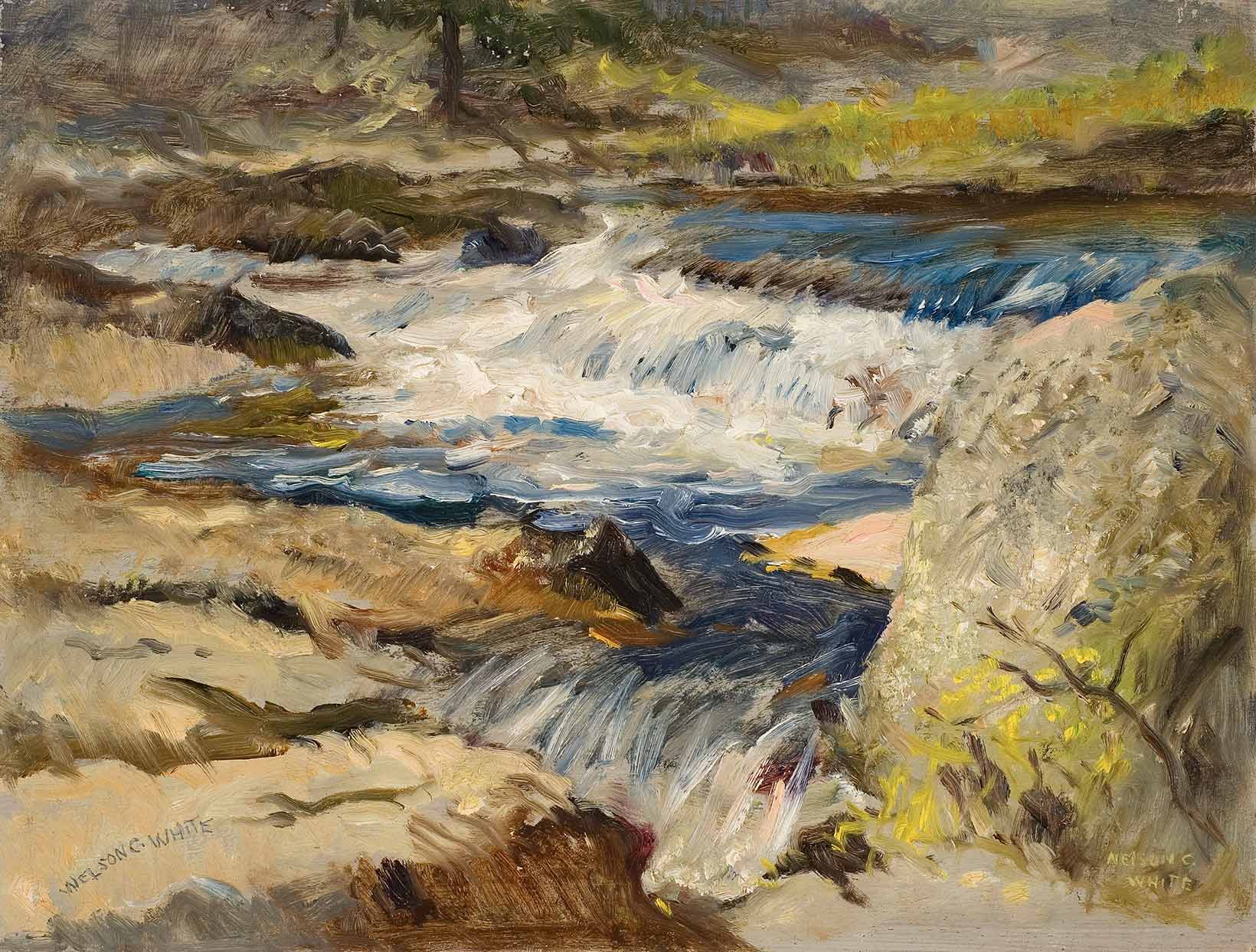Collection
In Situ: The Painted Panels
- The Museum will be closed Thursday & Friday, November 27 & 28.
Nelson C. White (1900 – 1989)
Stream and Rapids
Not only is the view of rolling rapids more dramatic than most of the others, but also the artist’s only direct association with the Lyme Art Colony was as a small child. He was three years old when he came to the Griswold House with his father, artist Henry C. White. The Whites spent every spring and fall in town until 1907, when they began summering permanently at a place of their own in nearby Waterford.
Father and son were so taken with Miss Florence and the art colonists, however, that they maintained their friendships in Old Lyme for the rest of their lives (and passed on their love of the place to Nelson’s son, Nelson H. White, who is also an artist). Their affection was remembered and honored in 1954, when the removal of a corner china cabinet in the dining room provided space for two additional panels – one for a painting by the father, the other by the son.
NELSON C. WHITE (1900-1989)
STREAM AND RAPIDS NIGHT, (INSTALLED 1954)
OIL ON WOOD PANEL
GIFT OF THE ARTIST
Early Education
White studied with his father, a Tonalist painter, and at the National Academy of Design. He exhibited at the National Academy of Design, Art Institute of Chicago, National Water Color Society, Connecticut Academy of Fine Arts, and regularly, from 1950 to 1985, with the Lyme Art Association. He also authored monographs about the artists Frank Currier and Abbott Thayer. For some unknown reason, he signed the panel twice, once in each of the lower corners.
1906 Oil on wood panel Gift of the Artist
Arthur Heming (1879-1961) Shooting the Rapids
While the rapids Nelson White portrayed are shallower than those on Arthur Heming’s panel, Shooting the Rapids, across the room, they may be just as daunting. There are no canoeists to worry about, but we readily recognize the folly of trying to navigate around the sharp rocks enclosing these rapids. The zigzag composition, the close viewpoint, the bright light, the echoing of intense colors, and the slashing (literally splashing) brushwork, especially in the depiction of foam and water – all contribute to the high energy of this panel. Squint at this image and you see something very like America’s abstract expressionist art of the mid-20th century. According to the inscription on back of the panel, the rapids are part of the waterfalls in Devil’s Hopyard, a Connecticut State Park in East Haddam.


